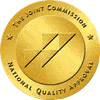For me, the collegiality of the practice of radiology is a highlight of my daily work. When I first considered leaving a traditional practice for teleradiology, I was worried that working remotely would leave me feeling disconnected. In actuality, I’ve never felt more engaged in a supportive and interdependent team committed to delivering quality patient care.
Close collaboration among medical professionals
I work days on alternate weeks, and there’s a sizeable group of medical professionals I consult with on a regular basis from hospitals across the U.S. It's kind of ironic that I'm sitting here at home, but I’m totally there for them. But that's how a lot of radiology is practiced these days.
We can easily connect: It takes me two clicks to get to talk with them about critical cases. I recognize their voices, names, and sites – and they know me, too – so we can also discuss follow-up on patients who had critical results the day before or earlier that day. Or they might ask for my thoughts on a certain difficult case where they need to make a call. They know that they can reach out to me for any questions and that I’m happy to help them take care of our patients.
At the end of my shift, I often take a moment to visit one or two websites of my partner practices and facilities. It’s helpful for me to match a face to the medical professionals I speak with on cases, and to have a real picture of their communities in my mind, even as I become credentialed at hundreds of locations.
Diverse skills aimed at a common goal
One thing that’s really impressed me is how much every member of our team understands that it’s all about patient care.
Certainly, you expect those with medical training to make the care connection. But I see team members every day offer their skills – in IT or credentialing or administration – in pursuit of the same patient-centric goal. We’re all clearly part of the same team, with everybody supporting everyone else to try to do the best we can for our patients.
I have a wonderful team – my medical services liaison, operations managers, production control specialists, scheduler, IT support, and many more – people I'm often in contact with multiple times a day, and they are always available. They help me get comparison reports. They help me get in touch with doctors, with nurses or other people I need to talk with. They kindly help me hook my printer and foot-pedal device to my computer (without the slightest hint of an eye-roll on my video call). If one person can’t resolve an issue I may be having, he or she finds someone who can, while allowing me to get back to reading cases.
Everyone understands that the patient is our mutual priority, and we work as a team to deliver the best patient care possible.
Teamwork creates a culture of cooperation
I literally love my job. A big part of that is the knowledge that I have such a supportive team. We have each other’s backs.
Every once in a while, my production control partner asks if I want to extend my shift. It's always an ask. It's not, "You have to do this." It's, "Hey, do you want to?"
When I can, I’m happy to do the extra work. Most radiologists at the end of their scheduled shifts are facing commute time. For goodness’ sake, my commute is less than 6 seconds long. I’m already home. I’m glad to help the team by reading some extra cases. However, if I have a commitment, I'll respond, "I'm so sorry, I can't today. I wish I could. I love my job! Thanks for asking me."
In fact, they’ve kind of gotten to know I like to finish my Sunday shifts on schedule, because I have family dinners every week with my sister and her family and my Dad. My team recognizes, "Hey, it’s Sunday, Dr. Lozano needs to leave on time for family dinner.” So, they ask less frequently to extend my Sunday shifts.
My teammates trust I’ll step in when I can, and I know, when I need to step away, they’ve got things covered.
Many personal benefits attracted me to become part of a teleradiology practice (which I touch upon in an earlier blog post, Shedding light on the “Dark Side” of radiology). Professionally, from my home office I feel better than ever about my ability to help patients as a radiologist and as a member of this phenomenal care team.






